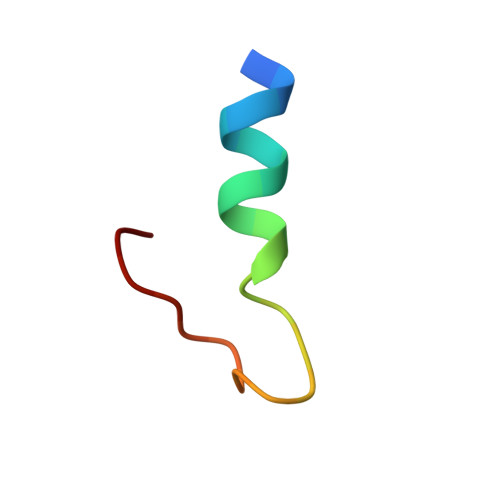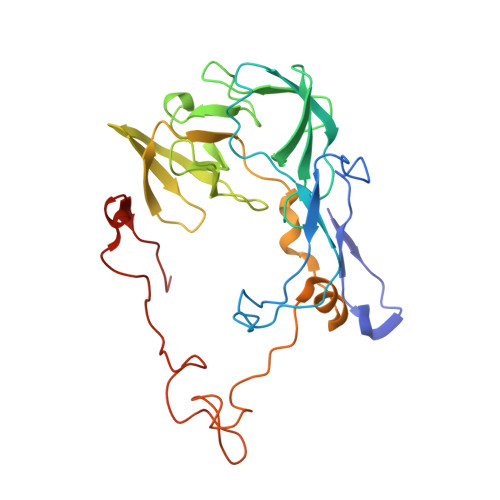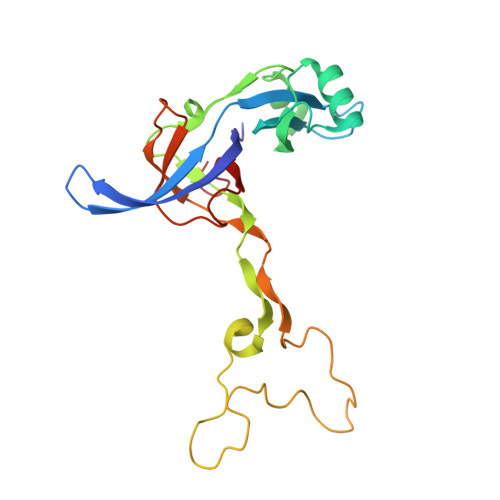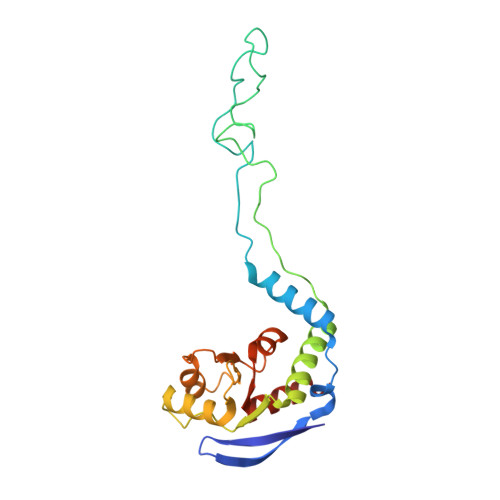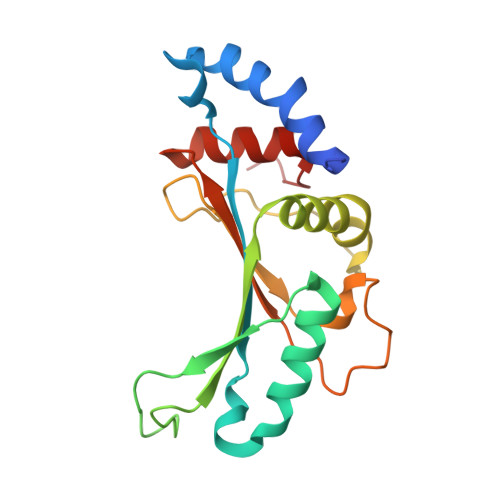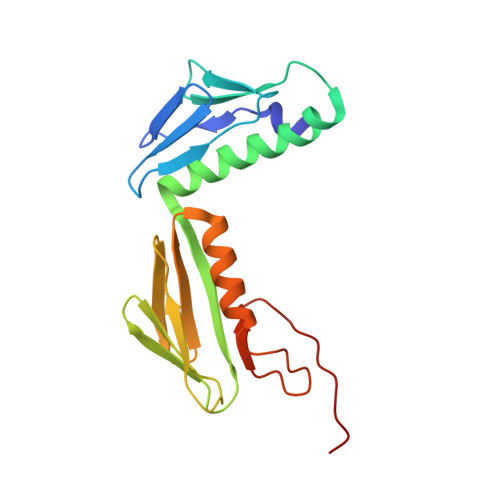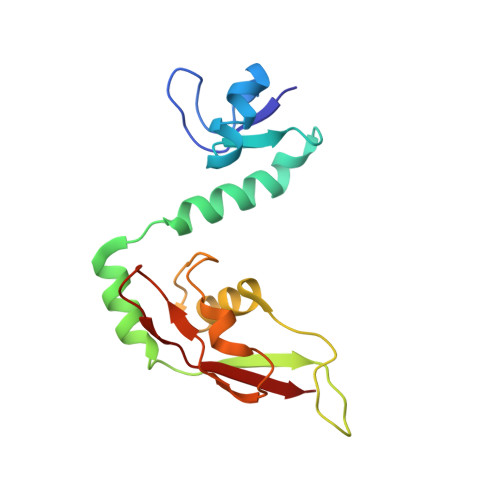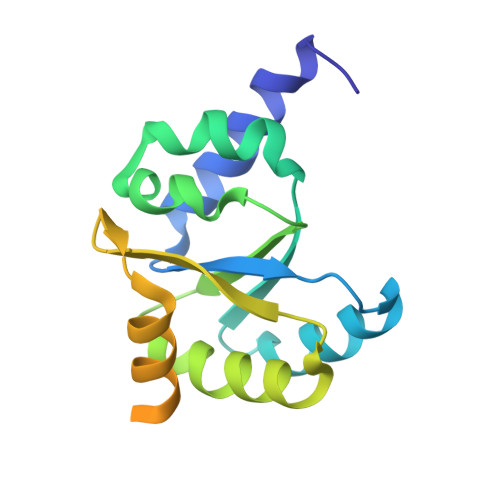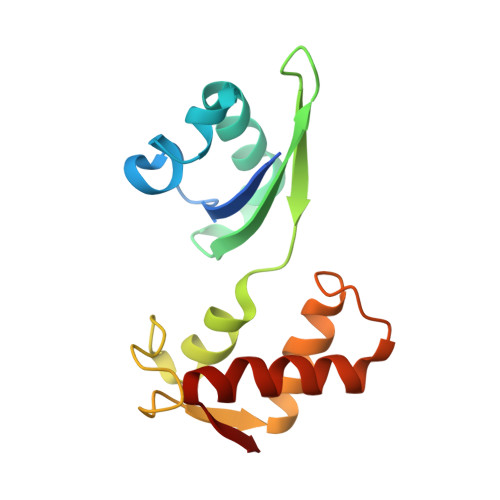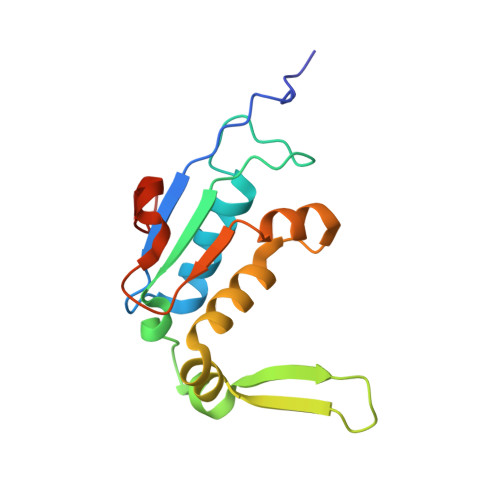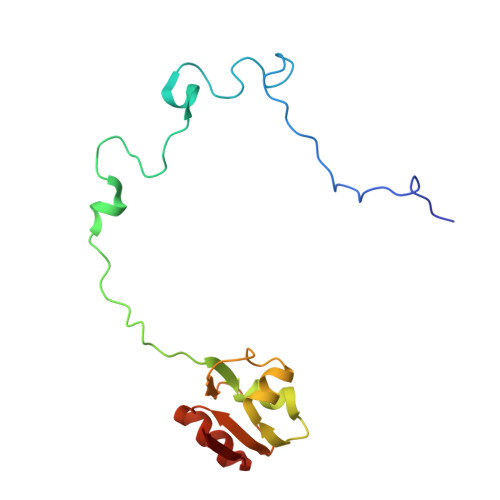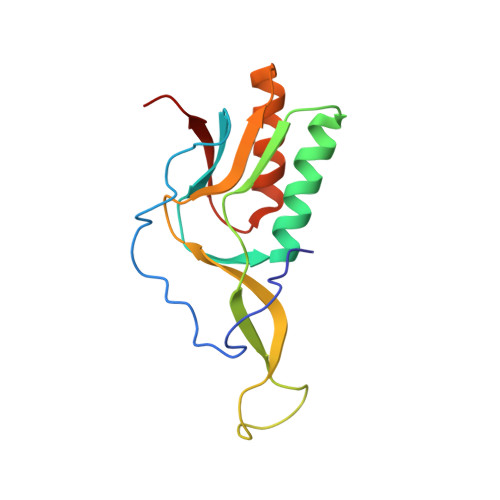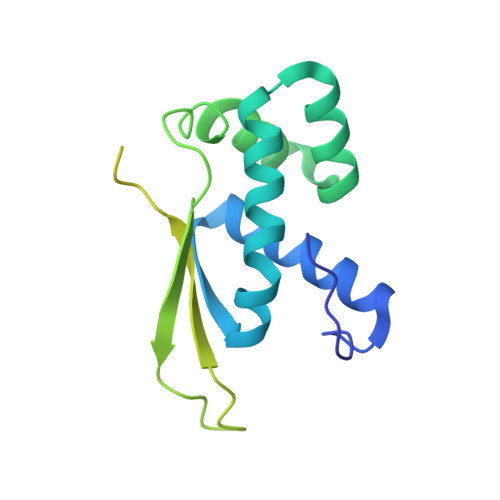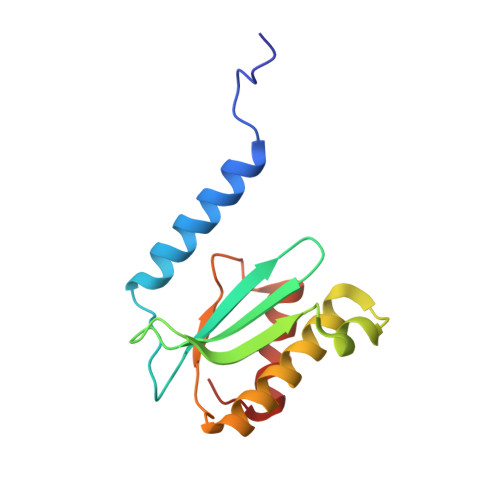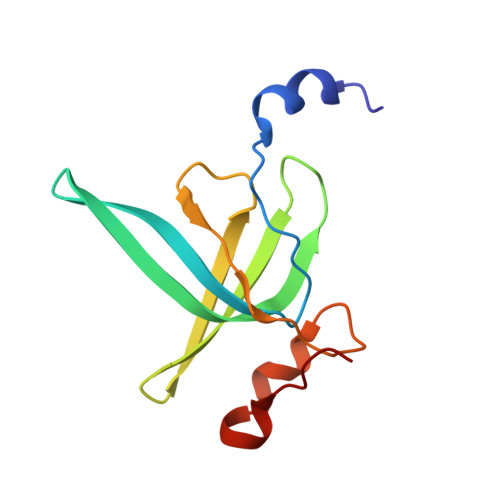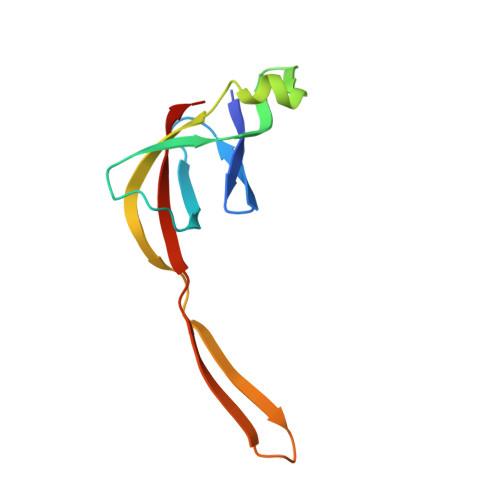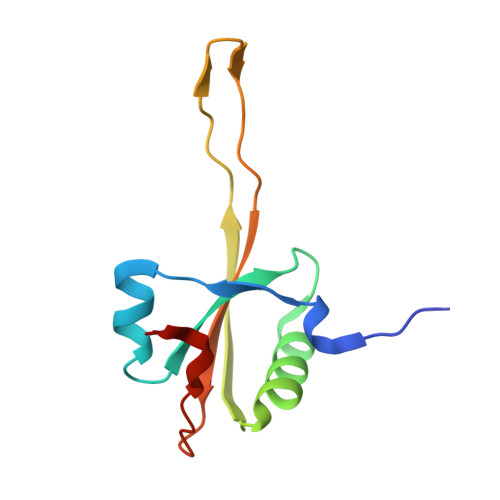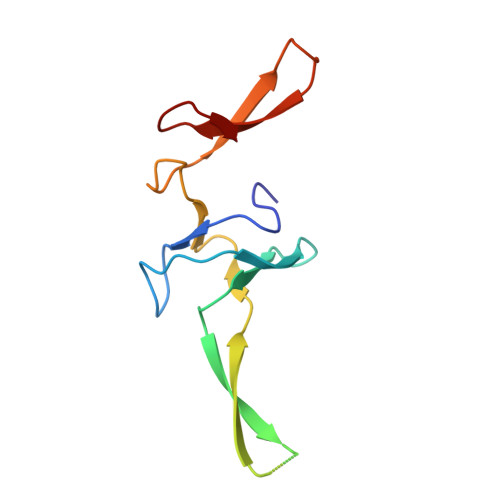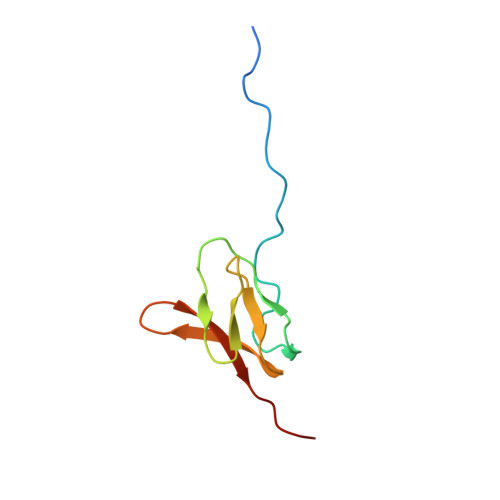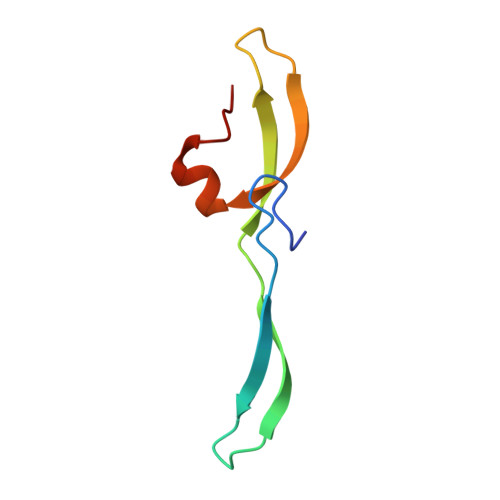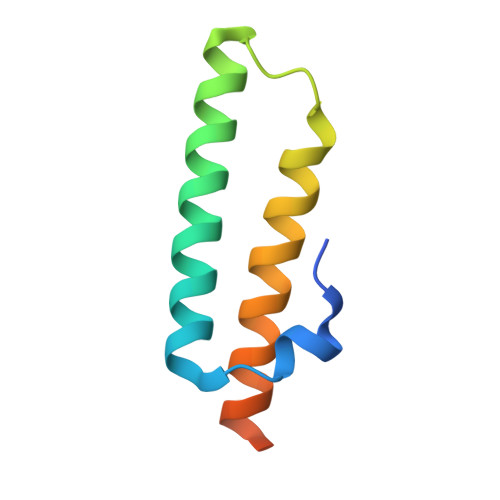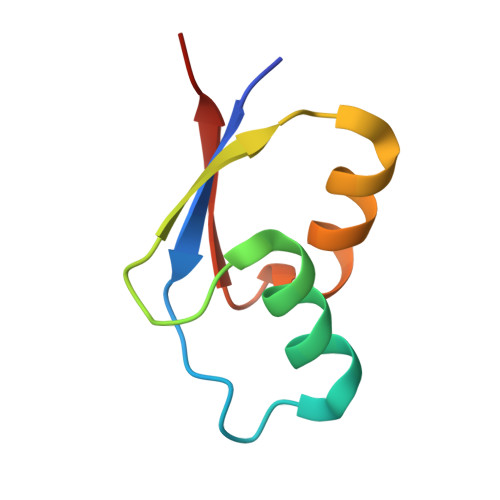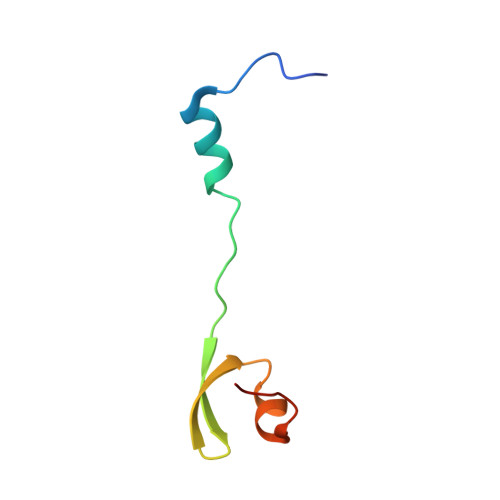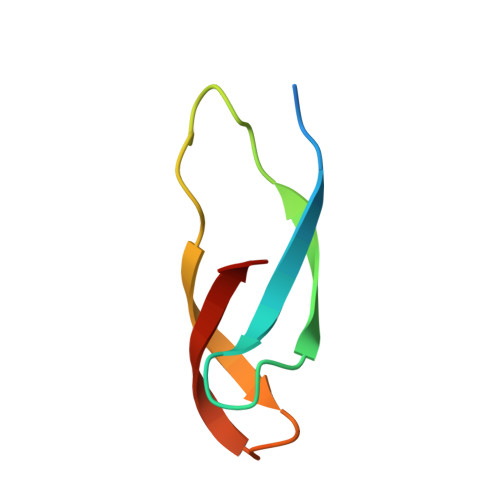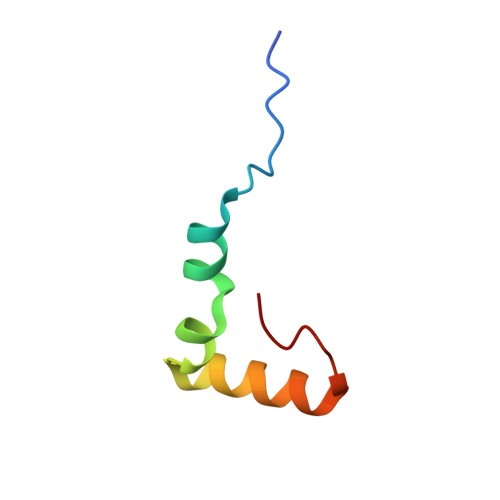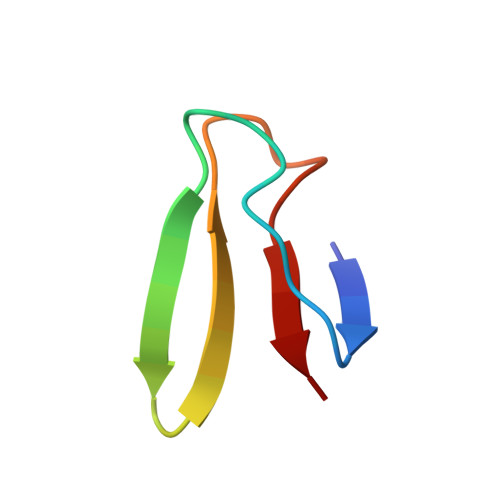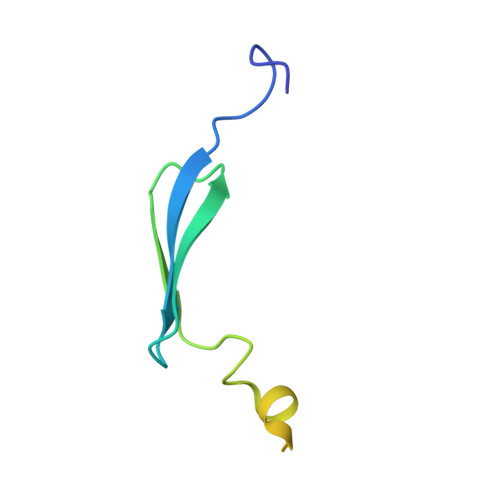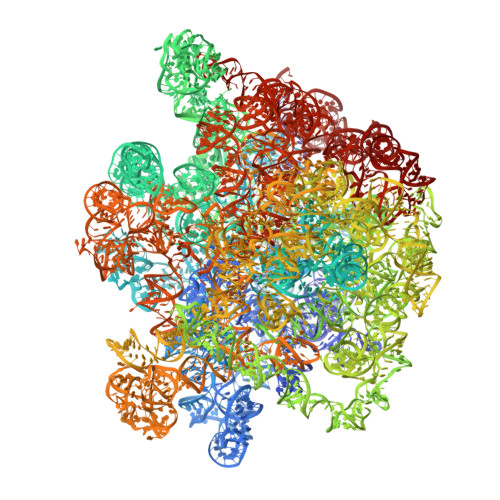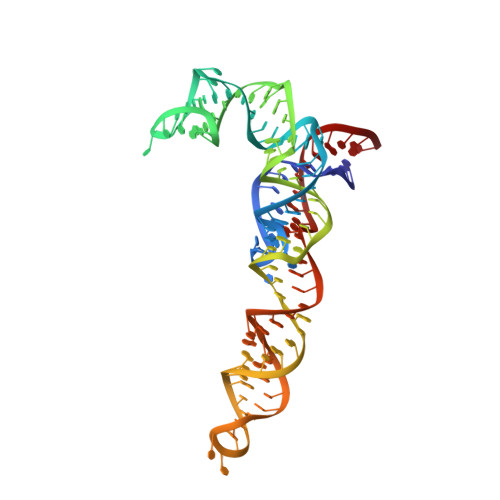Cryo-EM structures reveal the molecular mechanism of HflX-mediated erythromycin resistance in mycobacteria.
Srinivasan, K., Banerjee, A., Sengupta, J.(2024) Structure 32: 1443
- PubMed: 39029461
- DOI: https://doi.org/10.1016/j.str.2024.06.016
- Primary Citation of Related Structures:
8KAB, 8XZ3 - PubMed Abstract:
Mycobacterial HflX confers resistance against macrolide antibiotics. However, the exact molecular mechanism is poorly understood. To gain further insights, we determined the cryo-EM structures of M. smegmatis (Msm) HflX-50S subunit and 50S subunit-erythromycin (ERY) complexes at a global resolution of approximately 3 Å. A conserved nucleotide A2286 at the gate of nascent peptide exit tunnel (NPET) adopts a swayed conformation in HflX-50S complex and interacts with a loop within the linker helical (LH) domain of MsmHflX that contains an additional 9 residues insertion. Interestingly, the swaying of this nucleotide, which is usually found in the non-swayed conformation, is induced by erythromycin binding. Furthermore, we observed that erythromycin decreases HflX's ribosome-dependent GTP hydrolysis, resulting in its enhanced binding and anti-association activity on the 50S subunit. Our findings reveal how mycobacterial HflX senses the presence of macrolides at the peptide tunnel entrance and confers antibiotic resistance in mycobacteria.
Organizational Affiliation:
Structural Biology and Bioinformatics Division, CSIR-Indian Institute of Chemical Biology, 4, Raja S.C. Mullick Road, Jadavpur, Kolkata 700032, India; Academy of Scientific and Innovative Research (AcSIR), Ghaziabad 201002, India.








